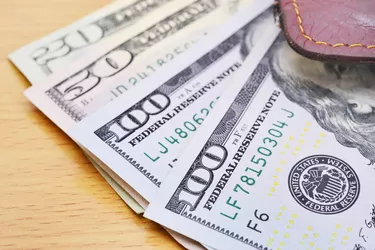
To check if a cashier's check has been cashed, call the issuing bank or credit union. They will be able to tell you if the cashier's check was presented and the funds were released.
If you have a bank account in a financial institution, you can visit the local branch and get a cashier's check. A cashier's check is the preferred way to pay when making a large purchase. But how do you know if it has been cashed? Or, how do you know it's not a fraudulent cashier's check if you receive one?
Video of the Day
Video of the Day
Common Questions About Cashing Cashier’s Checks
The payee may not accept a personal check if you're making a large purchase, like real estate. You may have to use a money order or a cashier's check. This is different from a certified check, which is written from your checking account and certified by your financial institution.
A cashier's check is funded by your checking or savings account. But it is written to the payee on the credit union or bank's account.
Although there is a cashier's check fee, this form of payment guarantees the payee that there won't be an overdraft. You might have some questions regarding tracking a cashier's check before you get one. Here are some FAQs.
How Do I Track a Cashier’s Check?
Unlike a personal check, where you can go online to your checking account and see if a check has cleared, you'll have to contact the issuing bank.
Find the phone number of the financial institution for the local branch and call a customer service representative. You can also visit the bank branch.
There's some information the issuing bank will require. For instance, you'll need the payee's name. The financial institution will also want the date the check was issued and the amount. They may also want the check number.
Once the issuing bank or credit union has this information, they'll be able to tell you if the cashier's check has cleared.
Can I Verify a Cashier’s Check Deposit Online?
This is not a personal check, so you cannot check online to see if a cashier's check has cleared through your checking account. The only way is to get the phone number of the issuing bank or credit union and call. Or you can visit a bank branch.
What if a Cashier’s Check Is Not Cashed?
If a cashier's check is not cashed, check with the payee. They may be sitting on it. But if you suspect it was lost or stolen, you may want to look to stop payment.
Stopping payment on a cashier's check is not easy. Unfortunately, many financial institutions will not allow a stop payment placed on a cashier's check. And those that do may require an indemnity bond before they stop payment and return your funds.
An indemnity bond is like an insurance policy for the financial institution. If the payee comes forward after the stop payment and requests payment, the credit union or bank can payout the funds without losing money. The indemnity bond would pay out.
If you ask for a stop payment and receive it, you'll have to wait 90 days or more to receive the amount of the check back.
How Do I Identify Cashier’s Check Fraud?
At some point, you may be on the receiving end of a cashier's check. Don't fall victim to a cashier's check scam. Cashier's check fraud is a common occurrence.
Although official checks have financial institutions' watermarks, a scammer can be an expert in passing a fake check.
According to the U.S. Office of the Comptroller of the Currency, one cashier's check scam is a check that overpays for the service or product you're selling. The scammer asks you to send the difference back to him. You do, but later find that it was a fake check, and now you're out the money because you sent it to the scammer before the check cleared. It can take up to two weeks for a cashier's check to clear.
There are other scams, but the bottom line is to be careful who you accept a cashier's check from and check with your financial institution before you cash or send funds back to the potential scammer.
Look for watermarks and research the name of the credit union or bank on the cashier's check. Is it a legitimate financial institution? If you recognize the bank's name, like Bank of America, call them to ensure they are the issuing bank.